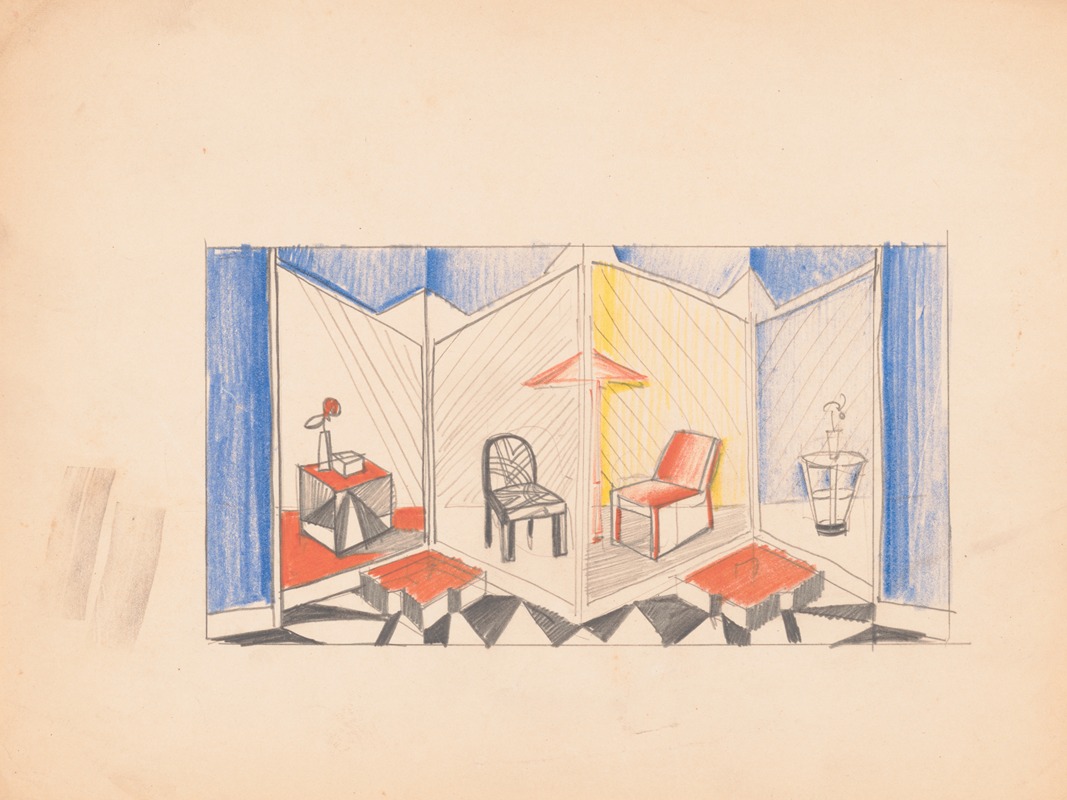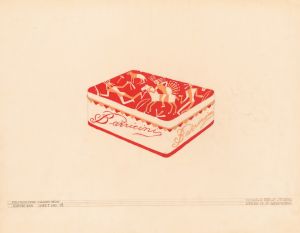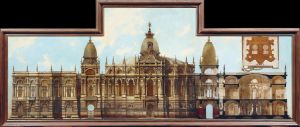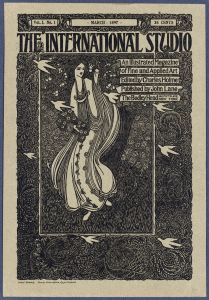
Exhibit design with stage in form of folding screen.] [Sketch of exhibit with modern chairs and tables
A hand-painted replica of Winold Reiss’s masterpiece Exhibit design with stage in form of folding screen.] [Sketch of exhibit with modern chairs and tables, meticulously crafted by professional artists to capture the true essence of the original. Each piece is created with museum-quality canvas and rare mineral pigments, carefully painted by experienced artists with delicate brushstrokes and rich, layered colors to perfectly recreate the texture of the original artwork. Unlike machine-printed reproductions, this hand-painted version brings the painting to life, infused with the artist’s emotions and skill in every stroke. Whether for personal collection or home decoration, it instantly elevates the artistic atmosphere of any space.
Winold Reiss (1886–1953) was a German-American artist and designer known for his contributions to modern design, portraiture, and decorative arts in the early to mid-20th century. His work often blended European modernist aesthetics with American themes, reflecting his unique perspective as an immigrant. Reiss is particularly recognized for his innovative approach to interior and exhibit design, as well as his portraits of diverse subjects, including Native Americans, African Americans, and other underrepresented groups.
The artwork titled Exhibit design with stage in form of folding screen. Sketch of exhibit with modern chairs and tables is an example of Reiss's design work, showcasing his ability to integrate functionality with modernist aesthetics. The sketch features a stage designed in the form of a folding screen, accompanied by modern chairs and tables. This design reflects Reiss's interest in creating spaces that were both visually striking and practical. His use of clean lines, geometric forms, and modern materials aligns with the principles of the modernist movement, which sought to break away from traditional decorative styles in favor of simplicity and functionality.
Reiss's exhibit designs were often created for public spaces, such as restaurants, theaters, and expositions. He was known for his ability to harmonize architecture, furniture, and decorative elements into cohesive environments. His designs frequently incorporated bold colors, innovative patterns, and a sense of dynamism, which made them stand out in the context of early 20th-century design.
While specific details about the context or purpose of this particular sketch are not readily available, it is consistent with Reiss's broader body of work, which often emphasized the integration of art and design in everyday life. His contributions to exhibit design were part of a larger effort to make modernist principles accessible and appealing to a wide audience.
Reiss's legacy as a designer and artist continues to be celebrated for its originality and cultural significance. His work remains an important example of the ways in which modernist design principles were adapted and applied in the United States during the early 20th century.








![Design for small showroom or powder room.] [Interior perspective study](/imgs/249293/s/winold-reiss-design-for-small-showroom-or-powder-room-interior-perspective-study-9bd6e85e.jpg)
![Design for unidentified interior.] [Drawing of columned hall with altar on a stepped plinth and decorative frieze featuring elephants](/imgs/249300/s/winold-reiss-design-for-unidentified-interior-drawing-of-columned-hall-with-altar-on-a-stepped-plinth-and-decorative-frieze-featuring-elephants-5fe6009d.jpg)

![Proposed decorations for Fisher Building, Detroit.] [Theatre foyer 109 & adjacent galleries](/imgs/249387/s/winold-reiss-proposed-decorations-for-fisher-building-detroit-theatre-foyer-109-adjacent-galleries-88035d64.jpg)
![Design for Cincinnati Union Terminal.] [Study for the color treatment of the ceiling](/imgs/249410/s/winold-reiss-design-for-cincinnati-union-terminal-study-for-the-color-treatment-of-the-ceiling-5366bd83.jpg)
![Designs for theater with black-framed proscenium and boldly colored settings.] [Study for stage light wall decoration, possibly for Caf ̌Crillon](/imgs/249419/s/winold-reiss-designs-for-theater-with-blackframed-proscenium-and-boldly-colored-settings-study-for-stage-light-wall-decoration-possibly-for-caf-crillon-8d25205e.jpg)
![Miscellaneous small sketches for inlaid table tops.] [Design with lined grid motif](/imgs/249437/s/winold-reiss-miscellaneous-small-sketches-for-inlaid-table-tops-design-with-lined-grid-motif-d3964044.jpg)
![Miscellaneous small sketches for inlaid table tops.] [Design with zig-zag motif](/imgs/249443/s/winold-reiss-miscellaneous-small-sketches-for-inlaid-table-tops-design-with-zigzag-motif-dbbaeb35.jpg)


